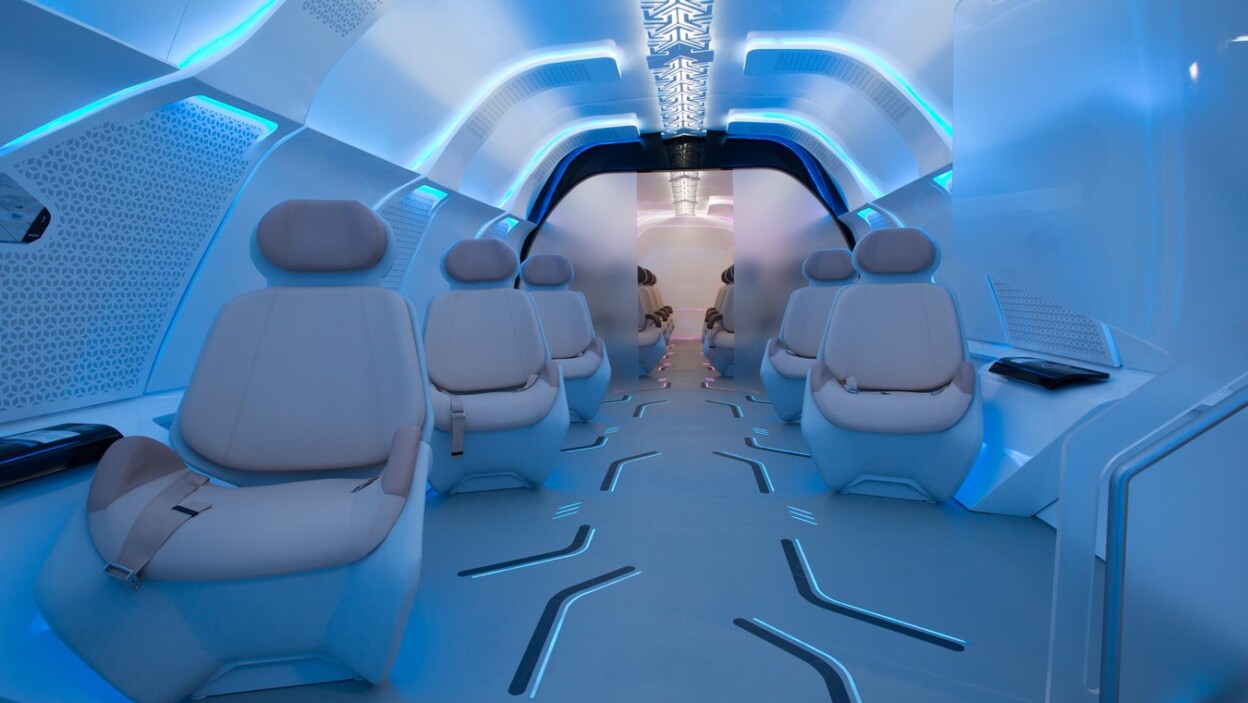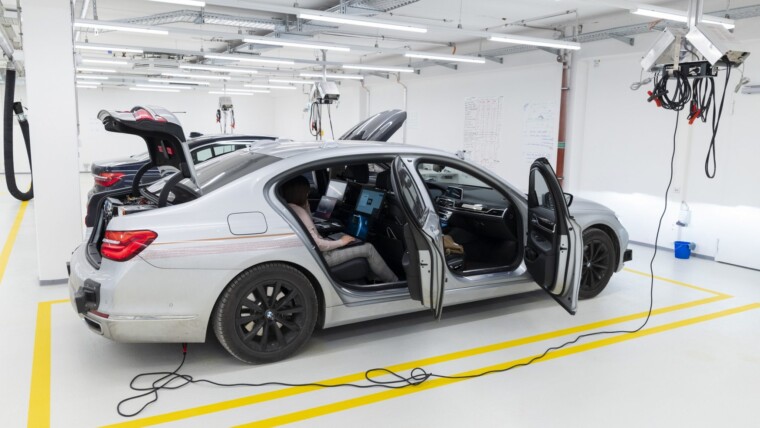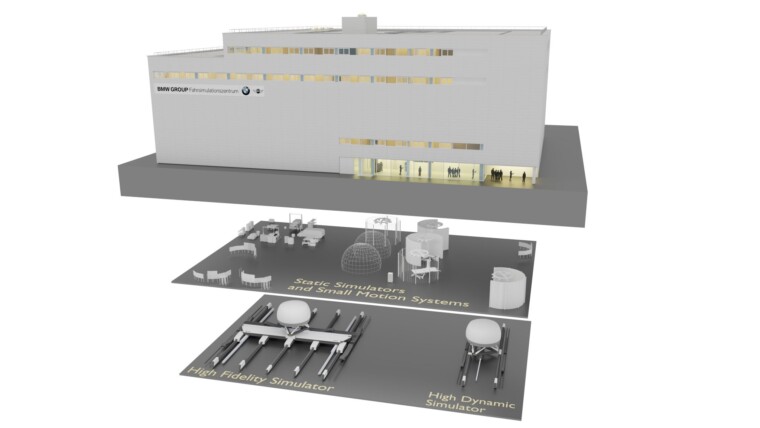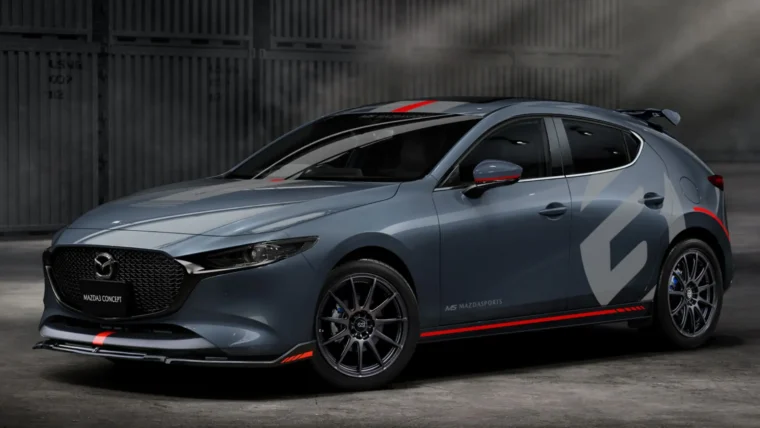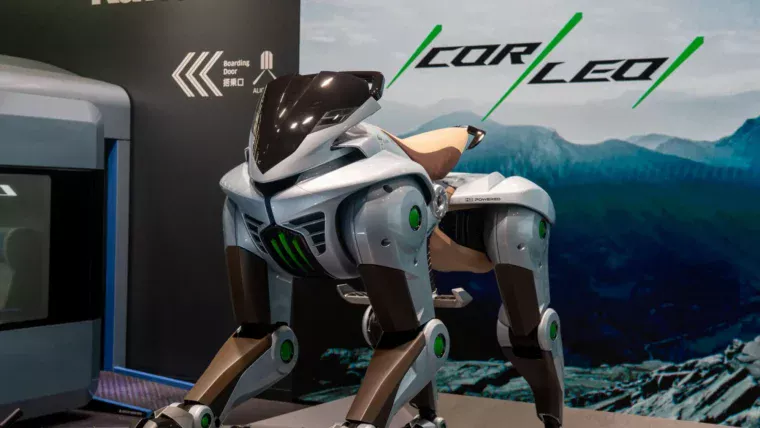Working with Virgin Hyperloop One, and the Roads and Transport Authority of Dubai (RTA), Designworks helped create a prototype design for the Dubai hyperloop capsule. The design recently made its global debut at City Walk Dubai as part of UAE Innovation Month. This is the first time a physical, full-scale hyperloop prototype has been shown to a broad public audience.
Once built, the passenger capsule, electromagnetically propelled through a vacuum tube, could reach speeds up to 1,080km/h, potentially traveling from Dubai to Abu Dhabi in as little as 12 minutes. Virgin Hyperloop One is currently negotiating the next stage of development (Phase 2) with the RTA with the clear aim of building the world’s first hyperloop transportation system in the UAE / Middle East.
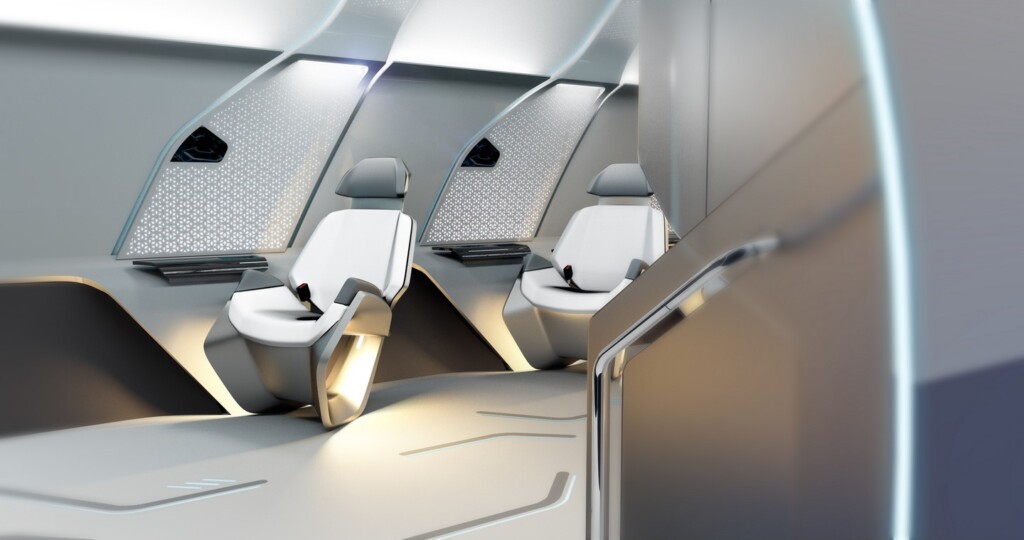
Designing for the future of mobility.
Building upon extensive design experience across public and personal transport projects and a firm focus on the future mobility landscape, Designworks played a crucial role as Virgin Hyperloop One’s design partner, offering critical thought leadership and concepts to create the prototype’s visual identity and interior passenger experience.
“With the Virgin Hyperloop One design, we wanted to create a new visual expression for a new mode of public transportation” says Designworks LA Studio Design Director, Johannes Lampela.
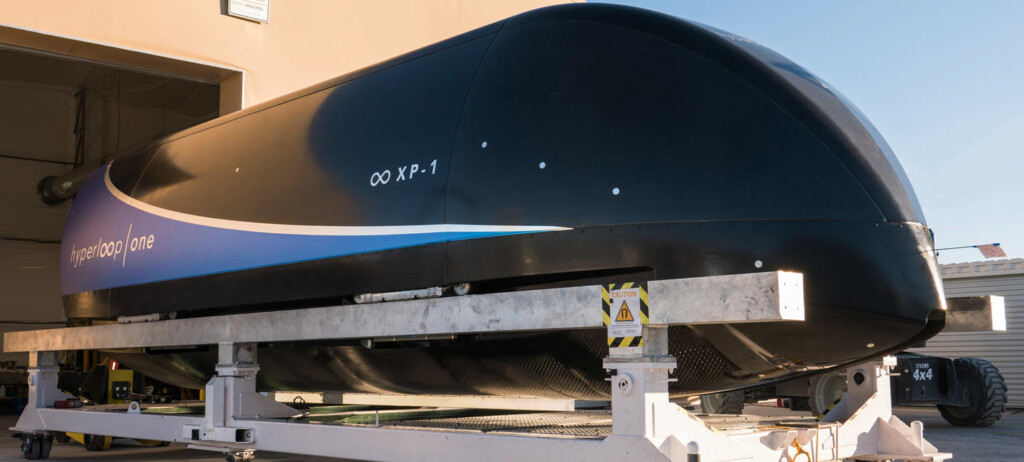
The central challenge the Designworks team faced was how to create a comfortable and engaging interior with no windows, and a current requirement for passengers to be seated throughout the journey. Designworks took what might at first glance be a very restrictive environment and transformed it into a more personal and uplifting sensory experience that can be both memorable and enjoyable.
Innovation with human-centric design.
The design concept suggested several ways of achieving this, through multidirectional and personally-controlled light, digital displays, and premium comfort – creating a sense of individualized space for each passenger. In first class, for example, adjustable leather seats feature touchscreens for personal settings for light brightness and color, allowing passengers to shift the light from blue to pink to set the mood. The seats include integrated heating and cooling. Passengers could enjoy personalized entertainment through built-in displays. In this way, the concept could create a more sophisticated and user-centered spatial experience that transcends the typical utilitarian notion of public transportation. Floor lighting is also aesthetically used to double as wayfinding.
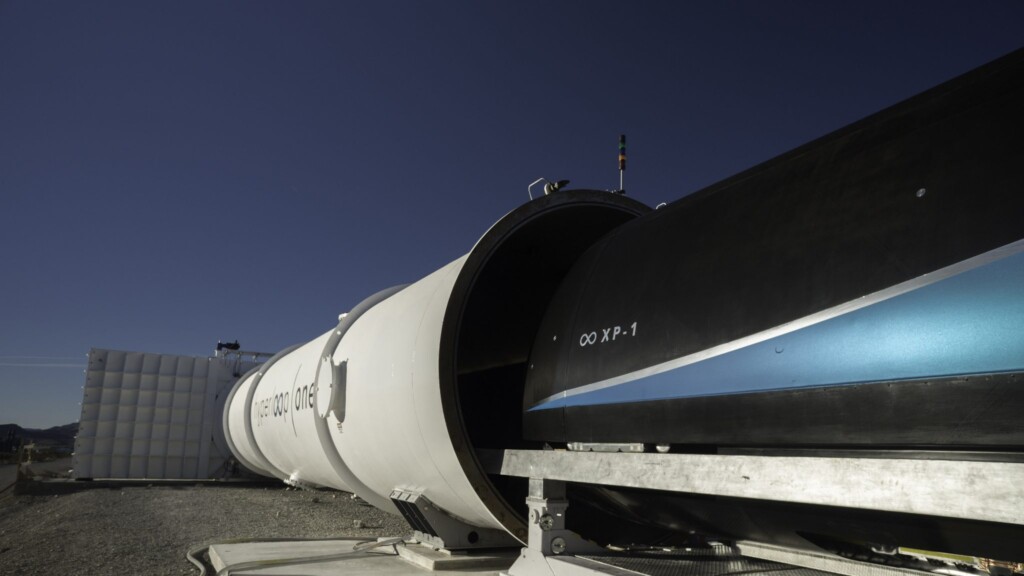
To further enrich the passenger experience, designers took inspiration from traditional Arabic patterns, taking care to create intentional and relatable cultural references while also applying a more futuristic and progressive interpretation. The design is thus anchored in the cultural legacy of the kingdom while acknowledging its contemporary achievements and aspirations.
The Virgin Hyperloop One prototype is another example of Designworks’ forward-looking approach to inventing the future of transportation and imagining the potential for new modes of mobility.
Other posts by Mark Leo

